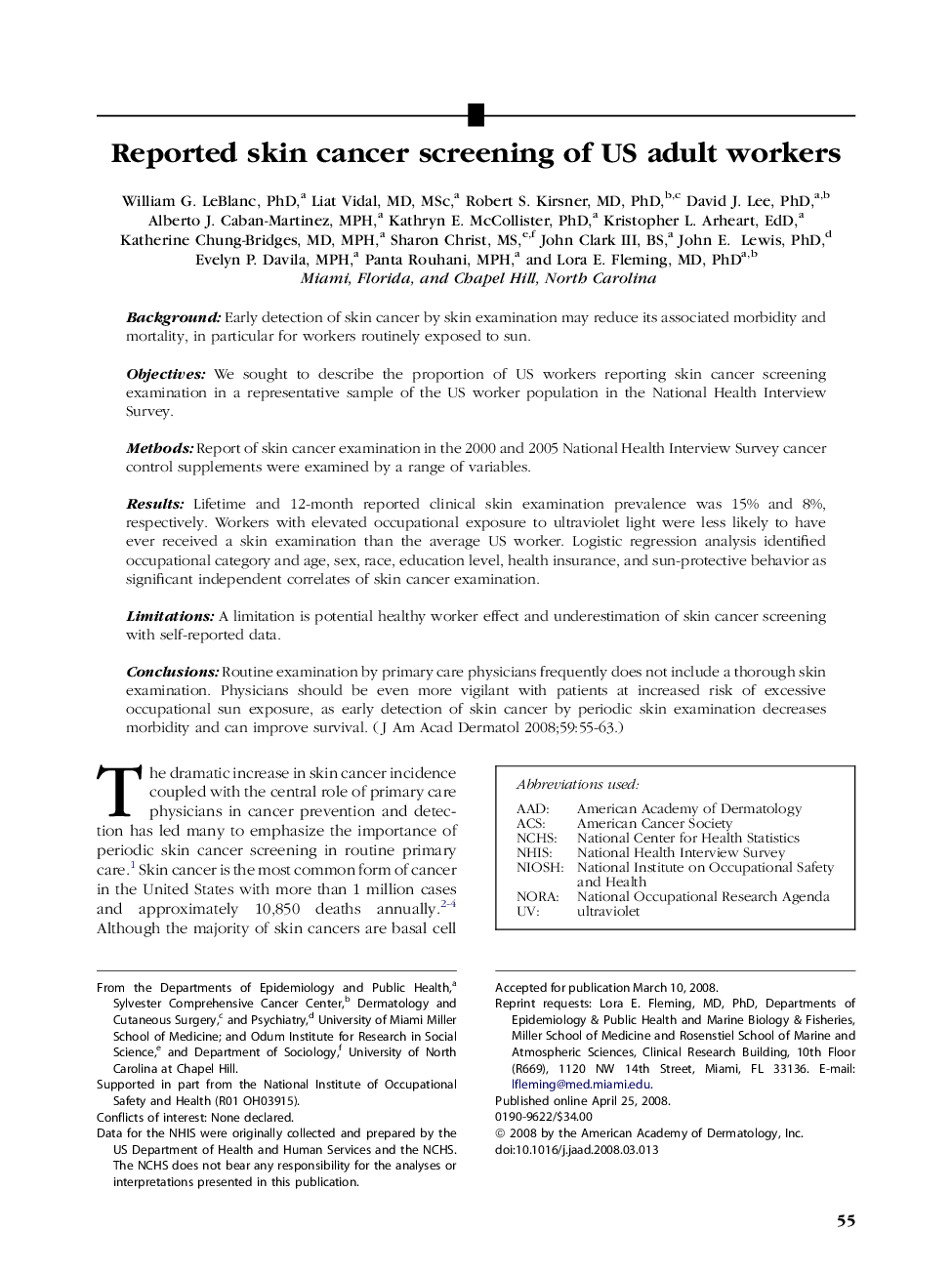| کد مقاله | کد نشریه | سال انتشار | مقاله انگلیسی | نسخه تمام متن |
|---|---|---|---|---|
| 3209161 | 1587622 | 2008 | 9 صفحه PDF | دانلود رایگان |

BackgroundEarly detection of skin cancer by skin examination may reduce its associated morbidity and mortality, in particular for workers routinely exposed to sun.ObjectivesWe sought to describe the proportion of US workers reporting skin cancer screening examination in a representative sample of the US worker population in the National Health Interview Survey.MethodsReport of skin cancer examination in the 2000 and 2005 National Health Interview Survey cancer control supplements were examined by a range of variables.ResultsLifetime and 12-month reported clinical skin examination prevalence was 15% and 8%, respectively. Workers with elevated occupational exposure to ultraviolet light were less likely to have ever received a skin examination than the average US worker. Logistic regression analysis identified occupational category and age, sex, race, education level, health insurance, and sun-protective behavior as significant independent correlates of skin cancer examination.LimitationsA limitation is potential healthy worker effect and underestimation of skin cancer screening with self-reported data.ConclusionsRoutine examination by primary care physicians frequently does not include a thorough skin examination. Physicians should be even more vigilant with patients at increased risk of excessive occupational sun exposure, as early detection of skin cancer by periodic skin examination decreases morbidity and can improve survival.
Journal: Journal of the American Academy of Dermatology - Volume 59, Issue 1, July 2008, Pages 55–63